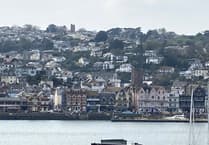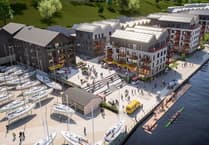The planning process is a complicated affair.
Firstly, it is awash with jargon and acronyms: material considerations, five-year land supplies, allocated sites, the JLP, HNA and NPPF for starters.
Then you have interpretation. Who would have thought that one person’s understanding of ‘housing need’ meant low-cost housing for local people while another’s means huge three or four bedroom £million homes? You also have words with completely new definitions. My three favourites are: affordable, sustainable development, and viability.
You might have thought that affordable meant, well, affordable but not according to government. They state that affordable means 80% of open market prices or rents. The fact that this is still completely unaffordable to the vast majority of local people on local wages means nothing. It does allow developers and councils to claim they’re building the houses we need but it’s a load of tosh.
The idea that continuing to build 1000s of houses over our green and pleasant land is in anyway sustainable is quite extraordinary. It might have a semblance of credibility if the houses we are building were actually energy self-sufficient and zero carbon. The new town of Sherford just outside Plymouth; not a solar panel in site. How ridiculous, that in this day and age, we’re still building like this, but don’t worry, it’s sustainable development apparently!
I naively thought financial viability meant doing something within cost. What I didn’t realise was first you need to take into account the huge increases in land values when planning permission is given. Then you factor in developer profit followed by the cost of infrastructure. Finally, you look to see if there’s any money left for ‘affordable’ housing. Everyone talks about the 1000’s of homeless families, the huge number on council and social housing lists – you’d think it would be their top priority. The truth is, obscene landowner pay-outs and soaring developer share prices come first – infrastructure and social housing are left with the crumbs.
There is a consultation by government concerning permitted development rights. It closes on the 25th September. Permitted development means if you meet certain criteria you don’t need to apply for planning permission. Nothing intrinsically wrong with that; it can save a load of bureaucracy over minor changes to properties. However, when expanded it can lead to some of the most disastrous developments. In the South Hams, the worst piece of permitted development legislation is called ‘Class Q.’ It allows agricultural buildings to be turned into houses with no planning application.
It’s only saving grace is it doesn’t apply in the AONB or Dartmoor National Park. The government is suggesting we lift this restriction. I cannot think of a single more destructive piece of legislation of the natural beauty of the South Hams. We have plenty of policies that allow sympathetic barn conversions, in the right places to be turned into residential houses. However, If the government gets its way, every isolated barn will be allowed, by right, to be changed into a house with all the residential paraphernalia and light pollution that goes with it. The suburbanisation of the AONB. If, like me, it’s something that concerns you please respond on-line (https://consult.levellingup.gov.uk/planning-development-management/permitted-development-rights-consultation/) and/or contact your MP.
We have our next executive meeting on September 21. A new strategic plan, policies on council tax and planning enforcement are some of the items. There’s a council to run and things to do.




